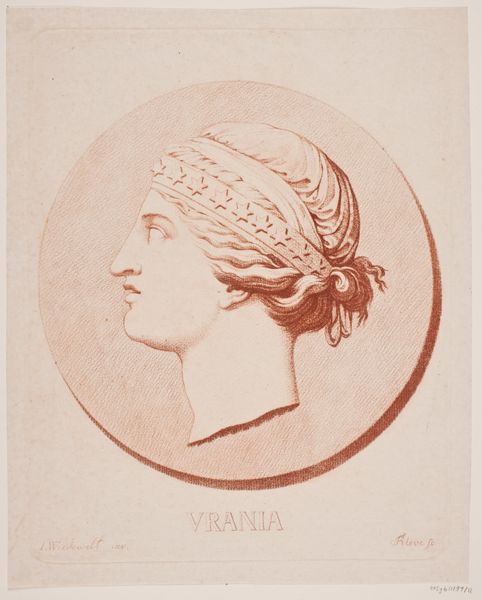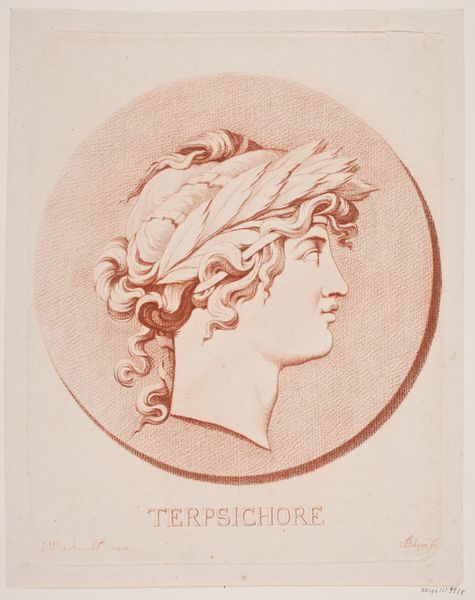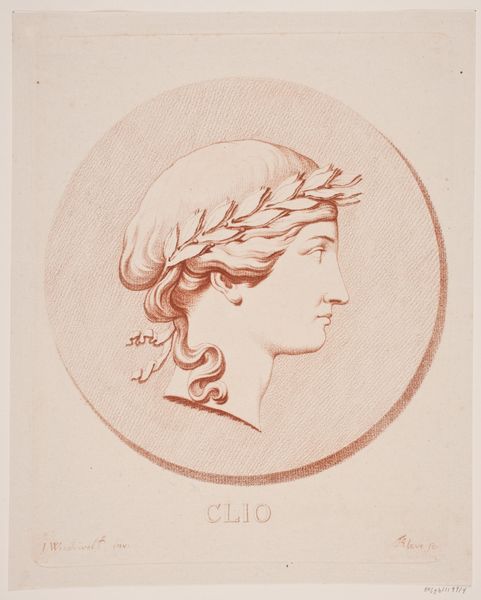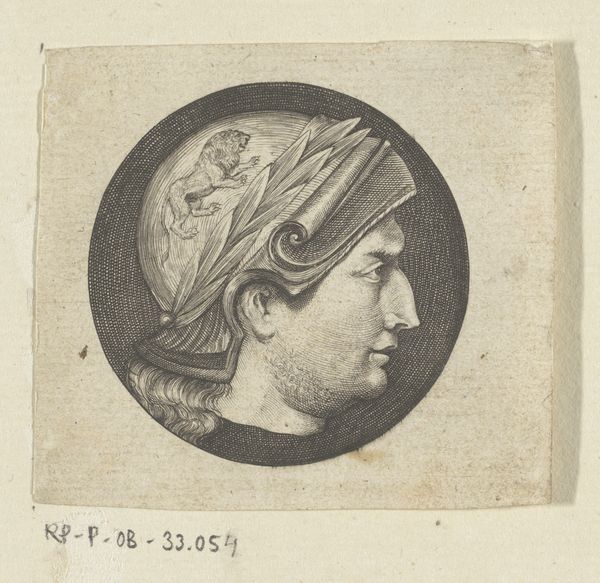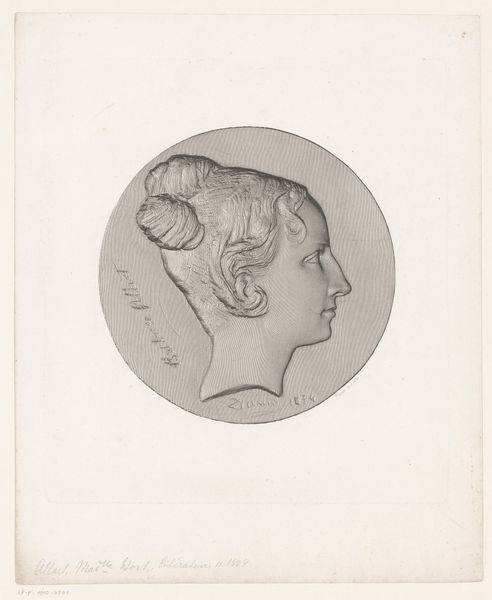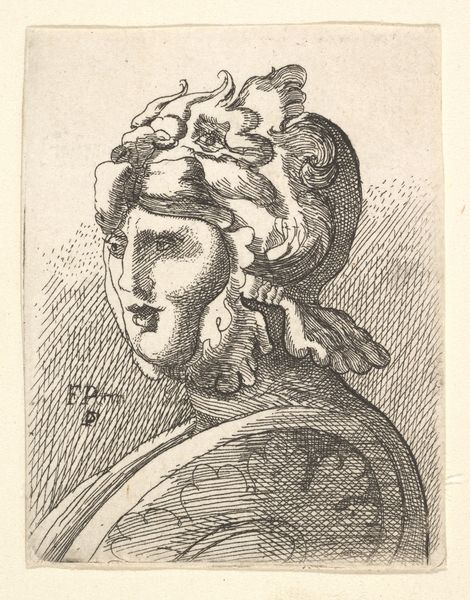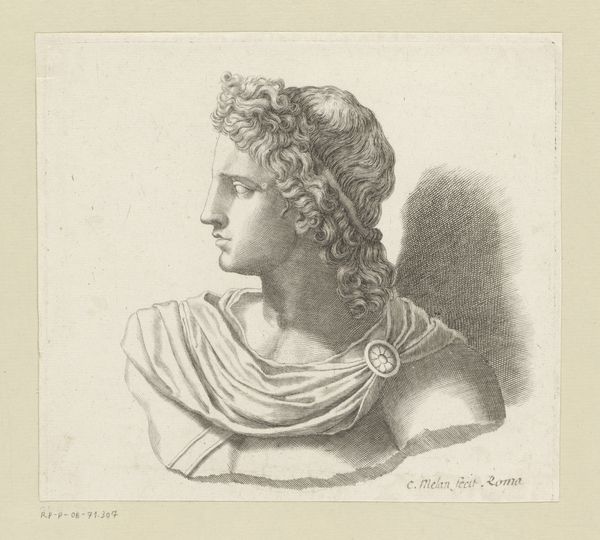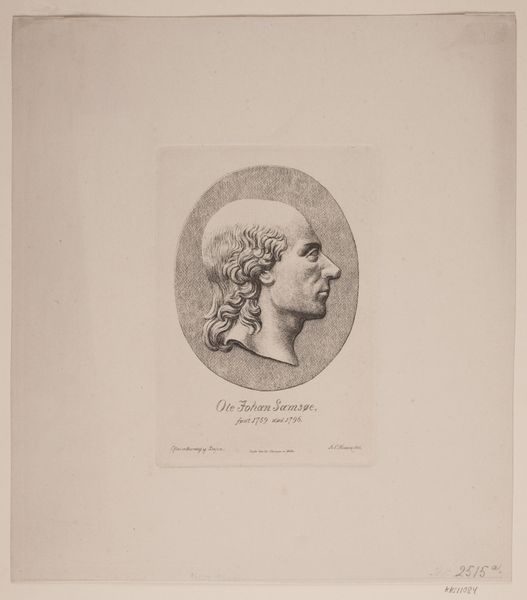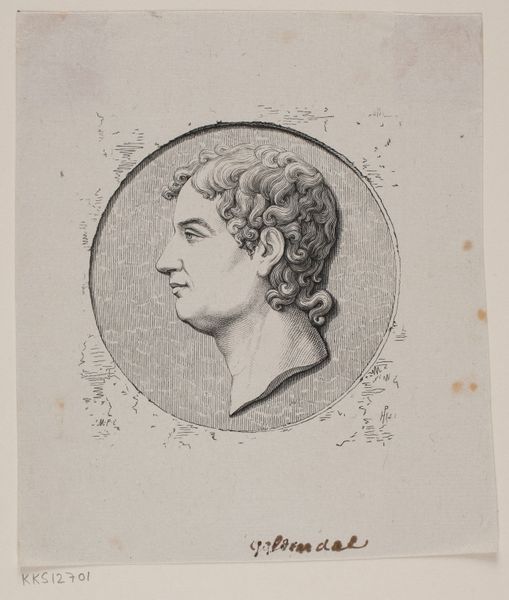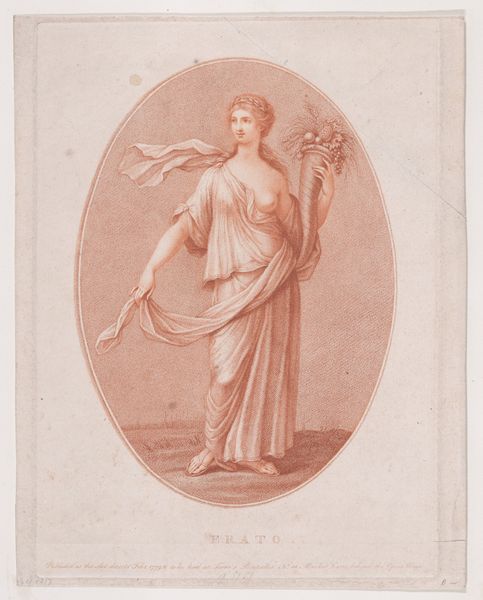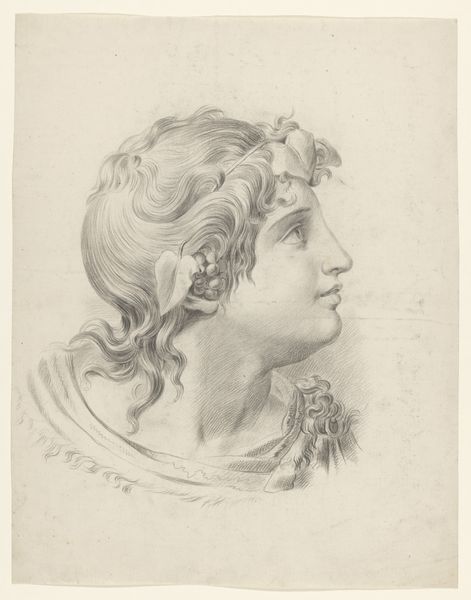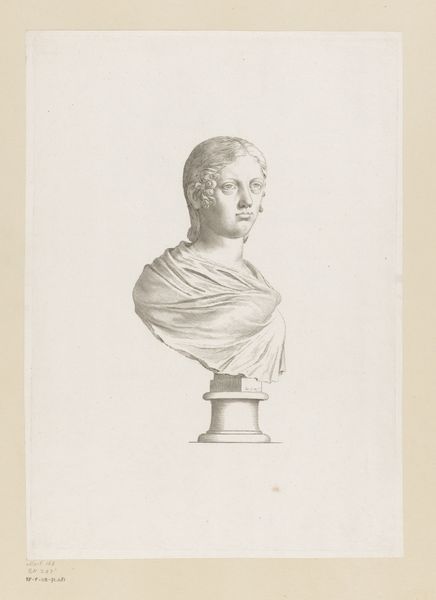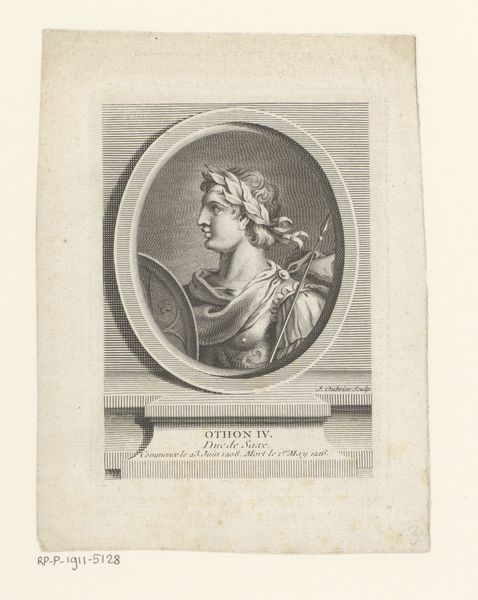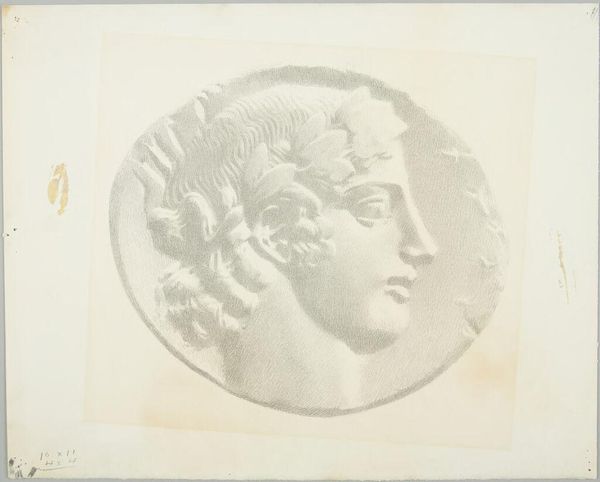
print, etching
#
portrait
#
neoclacissism
#
allegory
# print
#
etching
#
greek-and-roman-art
#
etching
Dimensions: 278 mm (height) x 229 mm (width) (plademaal)
Terkel Kleve's "Evterpe" is an engraving on paper, a refined medium particularly favored in the eighteenth century for its capacity to reproduce images and disseminate ideas. The print depicts a profile of the muse Evterpe within a circular frame, achieved through a meticulous process of incising lines onto a metal plate. The cross-hatching creates tonal variation and imbues the image with depth. Look closely at how the skilled manipulation of lines defines the contours of Evterpe's face, the texture of her hair, and the delicate floral arrangement adorning her head. The engraver's expertise is evident in the precision of the lines and the subtle gradations of tone. Engraving such as this was part of a sophisticated print culture that helped shape the circulation of knowledge and aesthetics in the age of enlightenment. While seemingly simple, the production of prints like this involved a complex division of labor, and the final print embodies the convergence of artistic skill, technological innovation, and market demand. By considering the material and the making of this print, we can move beyond a purely aesthetic appreciation and understand its wider cultural and historical significance.
Comments
No comments
Be the first to comment and join the conversation on the ultimate creative platform.
